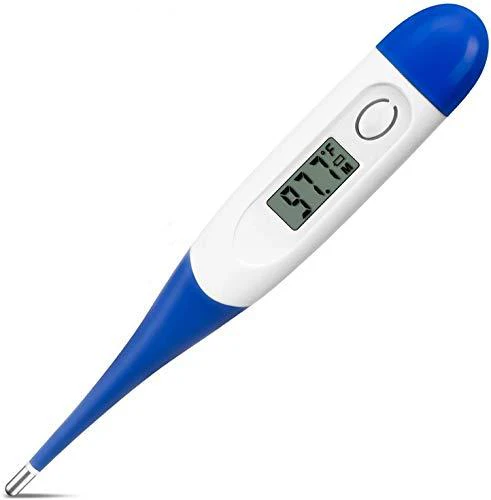What is a Thermometer?
Definition and Purpose
A thermometer is a device that measures temperature, which is the degree of heat present in a substance, object, or living being. It is a crucial tool in various fields such as healthcare, meteorology, industry, and everyday life. Thermometers serve the primary purpose of providing accurate temperature readings, which are vital for diagnosing illnesses, maintaining safety standards, and ensuring optimal environmental conditions. Whether you are measuring body temperature to detect a fever, checking the temperature of food during cooking, or monitoring industrial machinery, thermometers play an integral role in making informed decisions based on temperature data.
Importance of Temperature Measurement
Temperature is a fundamental physical property that affects many aspects of life. In medicine, accurately measuring body temperature is essential for diagnosing and managing conditions like fevers, infections, and inflammations. High body temperature is often a sign of illness, while abnormal temperature levels can indicate underlying health issues.
In industrial settings, temperature monitoring ensures the safe and efficient operation of machinery, chemical processes, and manufacturing. Overheating can lead to equipment failures, safety hazards, and product defects, making temperature control critical in industries such as oil refining, metallurgy, and food production.
In environmental sciences, thermometers help monitor climate and weather changes, providing valuable data for forecasting, research, and understanding the effects of global warming.
Types of Thermometers
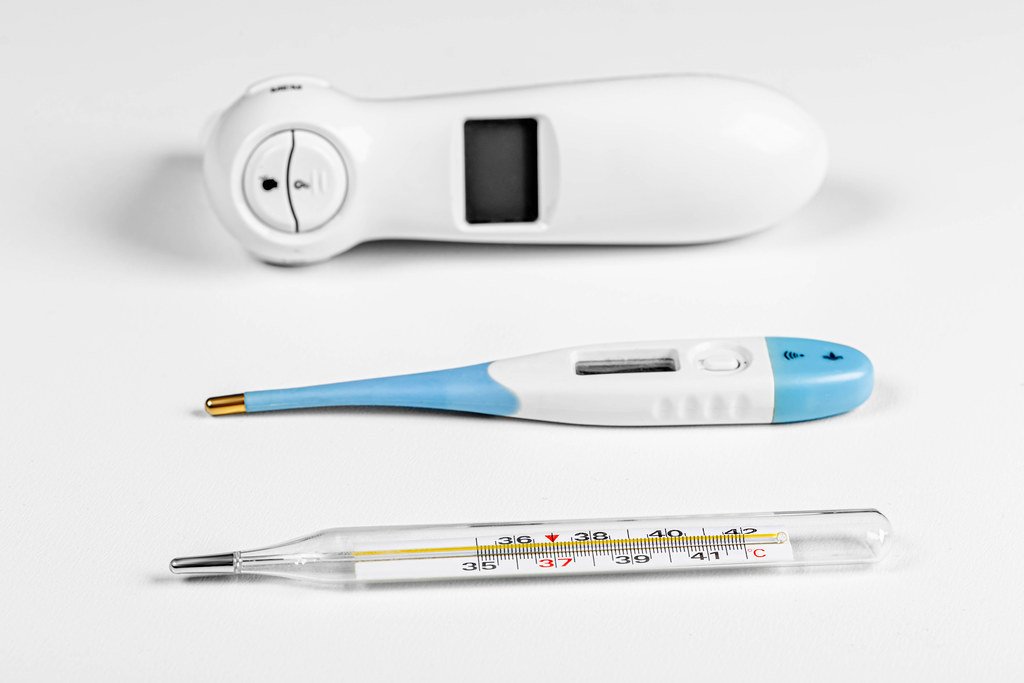
There are several types of thermometers, each suited to specific applications. The three most common types are digital thermometers, mercury thermometers, and infrared thermometers, each offering different advantages depending on their usage context.
Digital Thermometers
Digital thermometers are widely used in both medical and non-medical settings due to their accuracy, ease of use, and quick readings. They use electronic sensors to measure temperature and display the result on a digital screen. These thermometers are commonly used for measuring body temperature orally, rectally, or under the arm. Their primary advantage is that they eliminate the risk of mercury exposure, making them safer, particularly for home and medical use.
Mercury Thermometers
Mercury thermometers are the traditional devices used to measure temperature. They consist of a glass tube filled with mercury, which expands and rises when exposed to heat. Though highly accurate, mercury thermometers pose environmental and health hazards due to the toxicity of mercury. If the glass breaks, it can release mercury, which is harmful if inhaled or touched. As a result, many countries have phased out the use of mercury thermometers in favor of safer alternatives like digital and infrared models.
Infrared Thermometers
Infrared thermometers are non-contact devices that measure temperature by detecting infrared radiation emitted by an object or surface. These thermometers are commonly used for industrial purposes, but they have also become popular in healthcare settings for taking body temperature from a distance, especially during the COVID-19 pandemic. Infrared thermometers are fast, hygienic, and useful in situations where physical contact is not ideal, such as measuring the temperature of a baby, food, or machinery.
How Does a Thermometer Work?
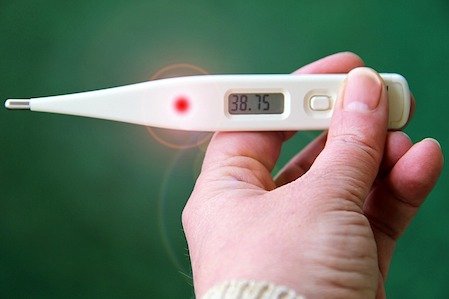
Thermometers operate based on the principle of detecting and measuring temperature changes, which can be represented in various ways depending on the type of thermometer. In essence, a thermometer translates the thermal energy (heat) from an object or environment into a readable value. The methods and science behind this transformation differ depending on the type of thermometer, such as mercury, digital, or infrared models.
The Science Behind Temperature Measurement
At its core, temperature is a measure of the kinetic energy of particles in a substance. When a thermometer comes into contact with an object or is exposed to the air, the particles in the object or air transfer energy to the thermometer. This energy causes a change in the properties of the thermometer’s sensor, which is then translated into a temperature reading.
For example:
- Mercury Thermometers: In a traditional mercury thermometer, the mercury expands or contracts as it absorbs heat, causing it to rise or fall in a glass tube. The scale on the cylinder permits the client to peruse the temperature.
- Digital Thermometers: These rely on sensors such as thermistors, which change their electrical resistance in response to temperature changes. A small electrical current passes through the sensor, and the resistance is measured. This measurement is then converted into a temperature reading that appears on a digital display.
- Infrared Thermometers: These devices detect the infrared radiation (heat) emitted by an object. Infrared energy increases with temperature, and the thermometer’s sensor captures this radiation and converts it into a temperature reading.
Types of Temperature Sensors
Different types of thermometers use various sensors to detect temperature changes. The most well-known sorts of sensors are::
- Thermocouples:
- How They Work: Thermocouples consist of two different metal wires joined at one end. When the junction of the two metals is exposed to heat, it generates a voltage that correlates with the temperature.
- Use Cases: Widely used in industrial settings, thermocouples can measure very high or low temperatures, making them suitable for furnaces, kilns, and other extreme environments.
- Thermistors:
- How They Work: Thermistors are made of materials that change their electrical resistance when exposed to different temperatures. There are two sorts: Negative Temperature Coefficient (NTC) thermistors, which decline opposition as temperature climbs, and Positive Temperature Coefficient (PTC) thermistors, which increment obstruction.
- Use Cases: Common in household thermometers and digital devices, thermistors are highly accurate within specific temperature ranges, making them ideal for medical and food safety applications.
- Resistance Temperature Detectors (RTDs):
- How They Work: RTDs use the fact that the electrical resistance of metals like platinum changes predictably with temperature. The sensor measures this resistance and converts it to a temperature reading.
- Use Cases: Known for their accuracy and stability, RTDs are commonly used in laboratories, HVAC systems, and industries where precise temperature control is critical.
- Infrared Sensors:
- How They Work: Infrared sensors detect the infrared radiation emitted by an object. The hotter the object, the more infrared radiation it emits. The sensor captures this radiation and converts it into a temperature reading.
- Use Cases: Infrared thermometers are particularly useful for non-contact temperature measurement in industrial, medical, and culinary applications, such as checking food temperatures or detecting fevers.
Calibration of Thermometers
To ensure that a thermometer provides accurate readings, it must be properly calibrated. Calibration is the process of comparing the thermometer’s readings to a known standard and making necessary adjustments to maintain precision.
- Why Calibration is Important:
- Over time, thermometers can drift from their original accuracy due to factors like sensor degradation, environmental exposure, and wear. Calibration corrects this drift, ensuring that the thermometer maintains its accuracy.
- Regular calibration is particularly important in fields that require precise temperature measurements, such as medical diagnostics, food safety, and scientific research.
- Calibration Methods:
- Ice Point Calibration: This method involves placing the thermometer in an ice bath, which should read exactly 0°C or 32°F. If the reading is off, the thermometer is adjusted accordingly.
- Boiling Point Calibration: Similar to ice point calibration, this method involves placing the thermometer in boiling water, which should read 100°C or 212°F at sea level. Adjustments are made if the reading is inaccurate.
- Using a Reference Thermometer: A calibrated reference thermometer with known accuracy is used to compare readings. If the thermometer being tested deviates from the reference, adjustments are made.
- How to Calibrate Digital and Infrared Thermometers:
- Digital Thermometers: Some digital thermometers allow users to perform a simple calibration using buttons or a specific mode. For more advanced devices, calibration is typically performed by a professional service.
- Infrared Thermometers: Calibration of infrared thermometers involves using a blackbody calibration source, which emits radiation at a known temperature. The thermometer’s readings are compared to the blackbody, and adjustments are made if necessary.
Medical Thermometers
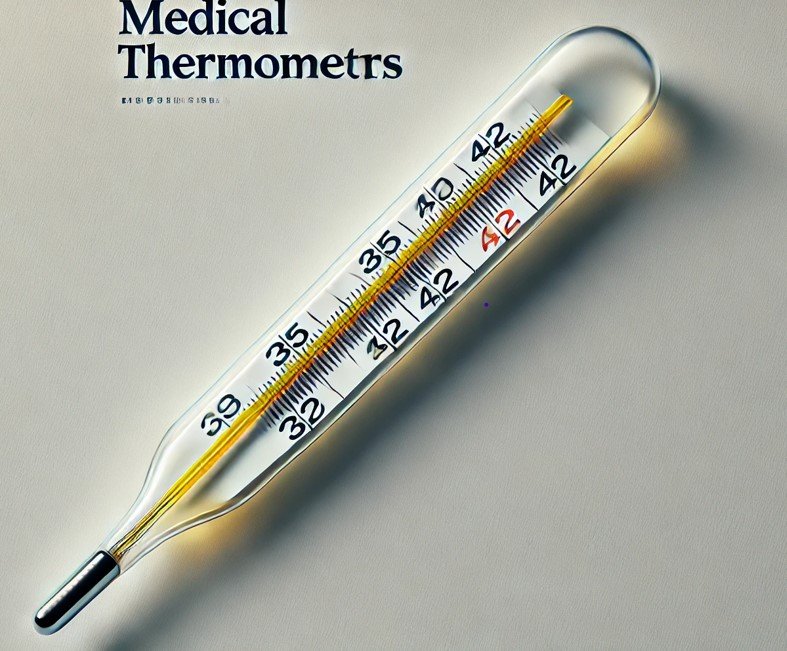
Types of Medical Thermometers
Medical thermometers are essential tools used to measure body temperature, and there are various types designed for different methods of temperature measurement. Digital thermometers are the most common, providing quick and accurate readings and suitable for oral, rectal, or underarm use. Ear (tympanic) thermometers use infrared technology to measure the temperature inside the ear and are favored for their speed, especially with children. Forehead (temporal) thermometers also use infrared sensors to detect heat emitted from the forehead and are ideal for non-contact temperature measurement. Traditional mercury-in-glass thermometers are now largely phased out due to safety concerns but were once widely used for their reliability.
Best Practices for Measuring Body Temperature
Accurate temperature readings depend on using the thermometer correctly. For oral measurement, place the digital thermometer under the tongue and close the mouth tightly until the reading is complete. Rectal measurement, which provides the most accurate core body temperature, is typically used for infants and young children; ensure the thermometer is well-lubricated before insertion. When using an ear thermometer, gently pull the ear back and up to straighten the ear canal for a more precise reading. For forehead thermometers, hold the device slightly away from the forehead and follow the manufacturer’s instructions for best results. Clean the thermometer after each use, particularly if it is shared, to prevent cross-contamination.
Fever Detection and Management
A fever is typically defined as a body temperature above 100.4°F (38°C). It is often a sign of infection or illness and can help the body fight off pathogens. Fevers in children can be alarming, but mild fevers are generally not dangerous. Management includes ensuring the person stays hydrated, providing rest, and using fever-reducing medications such as acetaminophen or ibuprofen if necessary. For infants, high fevers or prolonged fevers should be promptly assessed by a healthcare provider. Thermometers play a key role in monitoring temperature changes and assessing whether medical attention is required.
Digital vs. Mercury Thermometers
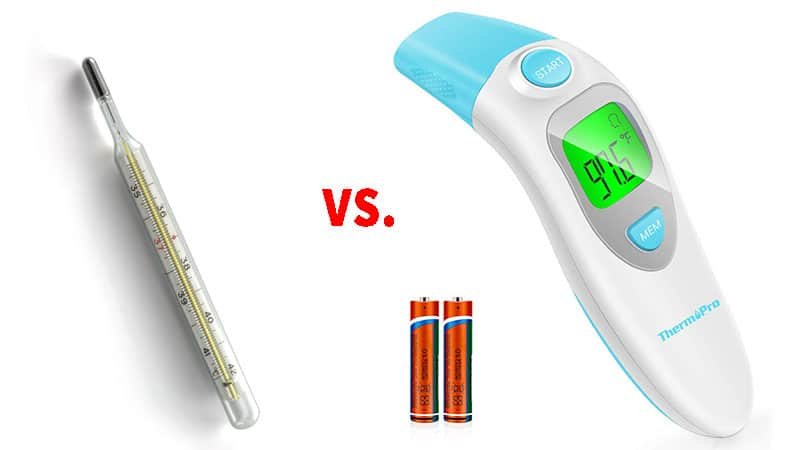
Advantages and Disadvantages of Digital Thermometers
Digital thermometers are popular for their ease of use, fast results, and accuracy. They rely on electronic sensors, providing quick readings and reducing human error. Digital thermometers are versatile, with options for oral, rectal, underarm, and non-contact forehead readings. However, they require batteries, and their accuracy can be affected by calibration or external factors. Additionally, they may not perform well in extreme conditions.
Understanding Mercury Thermometers
Mercury thermometers, once the standard for temperature measurement, are valued for their accuracy and durability. They use mercury, which expands with heat, providing precise readings without the need for batteries. However, due to the toxicity of mercury, these thermometers are less common today. Broken mercury thermometers can release harmful vapors, and mercury poses significant environmental risks if not properly handled.
Safety Concerns and Environmental Impact of Mercury
Mercury is a dangerous neurotoxin, leading many countries to phase out mercury thermometers. Even small amounts can be harmful, and cleaning up broken thermometers requires special care. Mercury can also contaminate the environment, entering water systems and affecting wildlife, making proper disposal critical. This has led to the increased use of safer digital thermometers.
How to Use a Thermometer Correctly
Step-by-Step Guide for Different Types
1. Digital Thermometers (Oral, Rectal, or Underarm Use):
- Oral: Place the thermometer tip under the tongue, close the mouth, and wait for the beep, indicating the reading is complete. Ensure the person has not eaten or drunk anything hot or cold in the past 15 minutes for accurate results.
- Rectal: Apply a small amount of lubricant on the thermometer tip, gently insert it 1/2 to 1 inch into the rectum, and wait for the beep. This method is often used for infants and provides highly accurate readings.
- Underarm (Axillary): Place the thermometer in the center of the armpit, ensuring it is in full contact with the skin. Lower the arm, hold it in place, and wait for the beep.
2. Ear (Tympanic) Thermometers:
- Gently pull the ear back and up to straighten the ear canal.
- Insert the thermometer into the ear, making sure the sensor is pointed directly toward the eardrum.
- Press the button and wait for the beep or signal that the reading is complete. This method is fast and often used for children.
3. Forehead (Temporal) Thermometers:
- Place the thermometer on or near the center of the forehead, depending on the device.
- Slowly move the thermometer across the forehead while holding down the button.
- Wait for the beep, and the temperature will be displayed. Ensure there is no sweat or obstruction that might affect the reading.
4. Infrared (Non-Contact) Thermometers:
- Hold the thermometer 1-2 inches away from the forehead, as per the manufacturer’s instructions.
- Press the button, and the device will measure the temperature without touching the skin.
- Wait for the reading to appear on the display. Non-contact thermometers are ideal for reducing the risk of cross-contamination.
Cleaning and Maintenance Tips
- After each use, clean the thermometer’s tip with rubbing alcohol or soapy water to prevent the spread of germs. Be sure to dry it thoroughly before storing.
- Rectal thermometers require extra care; clean with disinfectant or alcohol after use.
- For ear and forehead thermometers, clean the sensor with a soft cloth to avoid damage, and do not immerse them in water.
- Digital thermometers should be wiped down with a damp cloth or alcohol swab after use, ensuring no moisture enters the electronic components.
- Replace batteries in digital thermometers regularly to ensure the device works efficiently.
- Store thermometers in a dry, protective case to prevent damage or contamination. Avoid exposing the device to extreme temperatures or humidity.
Troubleshooting Common Issues
- Inconsistent readings: If readings vary significantly, ensure the thermometer is being used properly and positioned correctly. Clean the sensor, recalibrate if possible, and retry.
- Low battery warning: If the thermometer’s display fades or doesn’t power on, replace the batteries with new ones to maintain accuracy.
- Long response time: If your thermometer takes longer than usual to display results, it may need recalibration or cleaning, especially around the sensor area.
- Error codes: If a digital or infrared thermometer shows an error code, consult the manufacturer’s manual for specific troubleshooting steps. Resetting the device may resolve the issue in some cases.
- Inaccurate readings in cold or hot environments: Some thermometers may not work well in extreme conditions. Ensure the environment is within the recommended temperature range for the device.
Choosing the Right Thermometer for Your Needs
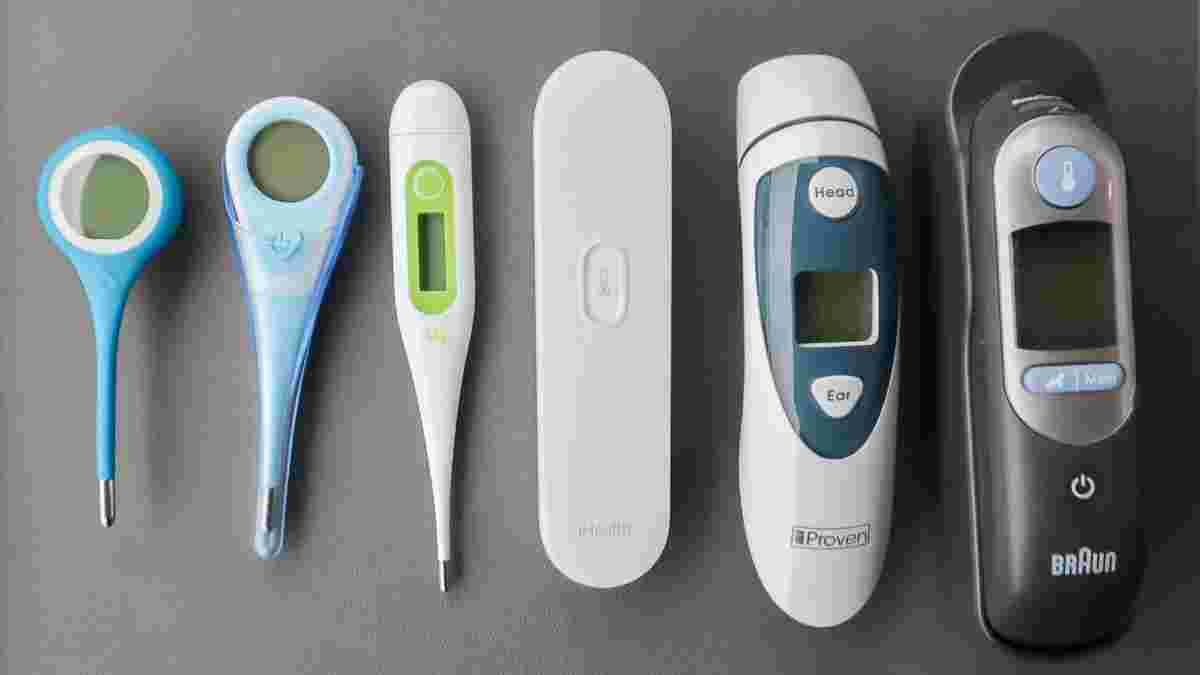
Factors to Consider
When selecting a thermometer, consider its type and intended use. Digital thermometers are versatile for home use, suitable for oral, rectal, or underarm readings. For non-invasive options, infrared forehead or ear thermometers are ideal, especially for children. Ease of use, user age, and cleaning requirements are also important factors, with rectal thermometers recommended for infants and non-contact models for older children and adults.
Cost vs. Accuracy
Balancing cost with accuracy is key. Digital thermometers are affordable but may lack the precision of more advanced models. Infrared thermometers, while costlier, provide quick, accurate readings, especially for non-contact use. Though accurate, mercury thermometers pose safety and environmental risks, making digital and infrared options better choices for most.
Top Brands and Recommendations
Reliable thermometer brands include Braun for infrared ear models, Omron for affordable and accurate digital thermometers, and Vicks for versatile digital options. For non-contact forehead thermometers, iProven and iHealth are recommended for their precision and ease of use.
The Future of Thermometers
As technology advances, thermometers are evolving beyond the traditional methods of temperature measurement. In the modern world, innovations have led to the development of more efficient, versatile, and safer temperature monitoring devices. These advancements not only improve the accuracy and convenience of thermometers but also open new possibilities in medical care, industrial monitoring, and everyday life. In this section, we explore the latest innovations in thermometer technology, including wearable thermometers and AI-powered smart devices.
Innovations in Thermometer Technology
Recent innovations in thermometer technology have focused on making devices more user-friendly, faster, and adaptable to various needs. Modern thermometers now come equipped with features such as:
- Non-contact Infrared Technology: This technology, which became widely popular during the COVID-19 pandemic, allows for safe, non-invasive temperature measurement. Infrared thermometers can measure body temperature from a distance, reducing the risk of cross-contamination and providing rapid results.
- Bluetooth and Wi-Fi Connectivity: Many digital thermometers now have Bluetooth and Wi-Fi capabilities, allowing users to sync their devices with mobile apps or other smart systems. This enables easy tracking of temperature trends over time and sharing data with healthcare providers, which can be particularly useful for managing chronic conditions or monitoring recovery from illness.
- Fever Alerts and Smart Notifications: Advanced thermometers now come with built-in smart alerts that notify users when a fever is detected or when temperature readings fall outside the normal range. This feature enhances the ability to manage health conditions proactively.
- Improved Accuracy and Speed: With advancements in sensor technology, thermometers have become faster and more precise, often providing temperature readings in just a few seconds. Innovations such as multi-point temperature sensors also help in reducing errors and providing more accurate readings.
Wearable Thermometers
Wearable thermometers represent one of the most exciting developments in the future of temperature monitoring. These devices are designed to continuously track body temperature without the need for manual checks, offering real-time data for both medical and personal health monitoring.
- Continuous Temperature Monitoring: Wearable thermometers are designed to be worn on the body, usually in the form of a patch, wristband, or other wearable device. They continuously measure and track body temperature over time, providing a comprehensive picture of temperature fluctuations.
- Health Applications: In healthcare, wearable thermometers are especially useful for monitoring patients with chronic conditions, those recovering from surgery, or individuals in critical care. By tracking temperature in real-time, medical professionals can receive immediate alerts if a patient’s temperature becomes abnormal, allowing for quicker intervention.
- Personal Use: Wearable thermometers are also becoming popular among athletes, fitness enthusiasts, and parents. For example, parents can use wearable thermometers to monitor their child’s temperature throughout the night without disturbing their sleep. Athletes may use these devices to ensure they are not overheating during intense exercise or training.
- Smart Integration: Many wearable thermometers are integrated with smartphone apps or other smart devices, enabling users to track their temperature over time, receive alerts, and share their data with healthcare professionals when necessary. This makes them a valuable tool in personalized healthcare and wellness management.
AI and Smart Temperature Monitoring Devices
Artificial intelligence (AI) and smart devices are revolutionizing the way temperature is monitored and managed. By integrating AI algorithms into thermometer technology, devices can now provide enhanced accuracy, predictive insights, and more personalized temperature monitoring solutions.
- AI-Powered Predictive Analytics: AI algorithms can analyze temperature data and detect patterns that may indicate the onset of illness or health conditions before symptoms become apparent. For example, AI can monitor temperature trends in patients with chronic illnesses and provide early warnings of infections or fevers, allowing for timely medical intervention.
- Smart Home Integration: AI-powered thermometers are increasingly being incorporated into smart home ecosystems. For example, these devices can be connected to home climate control systems to adjust heating or cooling based on the user’s body temperature. This not only enhances comfort but also improves energy efficiency in smart homes.
- Remote Health Monitoring: Smart thermometers that integrate with telemedicine platforms allow healthcare providers to remotely monitor patients’ temperatures in real-time. This is particularly valuable for elderly patients, individuals with mobility issues, or those recovering from illnesses at home. Physicians can access real-time data and provide guidance without the need for physical visits.
- AI and Machine Learning in Disease Management: AI-powered thermometers are being used to track temperature trends for broader population health management. In pandemic situations, such as COVID-19, smart thermometers equipped with AI can help health authorities monitor outbreaks by analyzing temperature data from large groups of people in real-time.
Key Takeaways
- A thermometer is an essential device used to measure temperature, with applications ranging from medical diagnostics to food safety and industrial processes.
- There are various types of thermometers, including digital, infrared, and mercury thermometers, each designed for specific purposes and use cases.
- Thermometer technology has evolved significantly, with innovations like smart thermometers and contactless models offering enhanced convenience and safety.
- Ensuring accuracy is crucial when using thermometers, which can be affected by factors such as environmental conditions and proper calibration.
- Choosing the right thermometer depends on your needs, whether for medical, culinary, or scientific purposes, and factors like speed, precision, and ease of use.
FAQs
Q1. What is the best type of thermometer for home use?
A: Digital thermometers are typically the best choice for home use due to their ease of use, quick readings, and accuracy.
Q2. How do you clean a thermometer?
A: Most digital thermometers can be cleaned with a cotton swab and rubbing alcohol. Ensure the thermometer is turned off and dry before storing it.
Q3. Are mercury thermometers still safe to use?
A: Mercury thermometers are less commonly used today due to the toxic nature of mercury. If broken, the mercury can be hazardous, so most people prefer digital thermometers for safety reasons.
Q4. Can a thermometer be used for different purposes (e.g., medical and cooking)?
A: No, it is best to use thermometers designed for specific applications. Medical thermometers should not be used for cooking and vice versa.
Q5. How accurate are contactless thermometers?
A: Contactless thermometers are highly accurate when used correctly, though certain factors like distance from the object and environmental conditions may affect readings.
Conclusion
The future of thermometers is one filled with promise, as advancements in wearable technology, AI integration, and smart devices transform how we monitor and respond to temperature changes. These innovations are reshaping medical care, personal health management, and industrial applications, offering greater accuracy, convenience, and real-time insights. Wearable thermometers and AI-powered devices are particularly paving the way for continuous, personalized monitoring, giving users and healthcare providers the tools to detect and manage health conditions more effectively. As technology continues to evolve, the humble thermometer is becoming a critical component of the future of healthcare and smart living.
